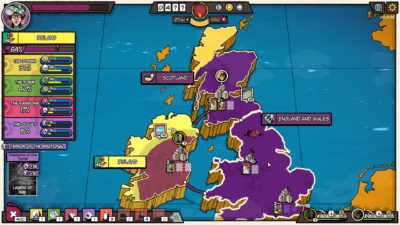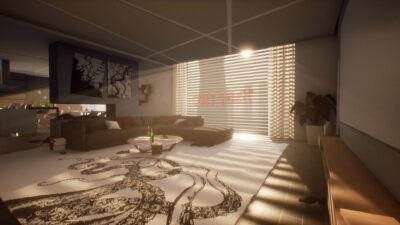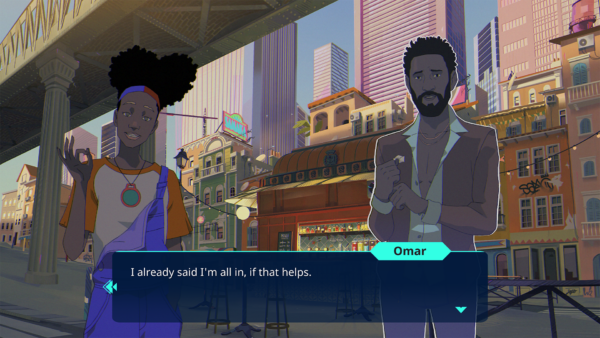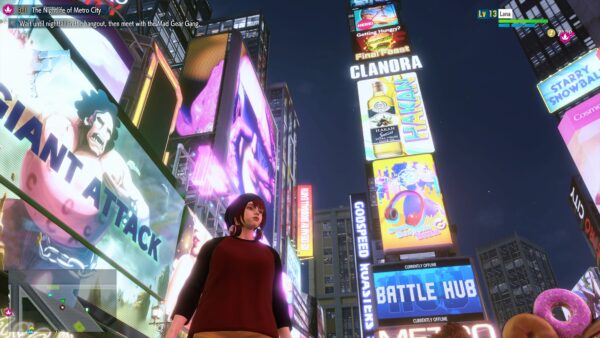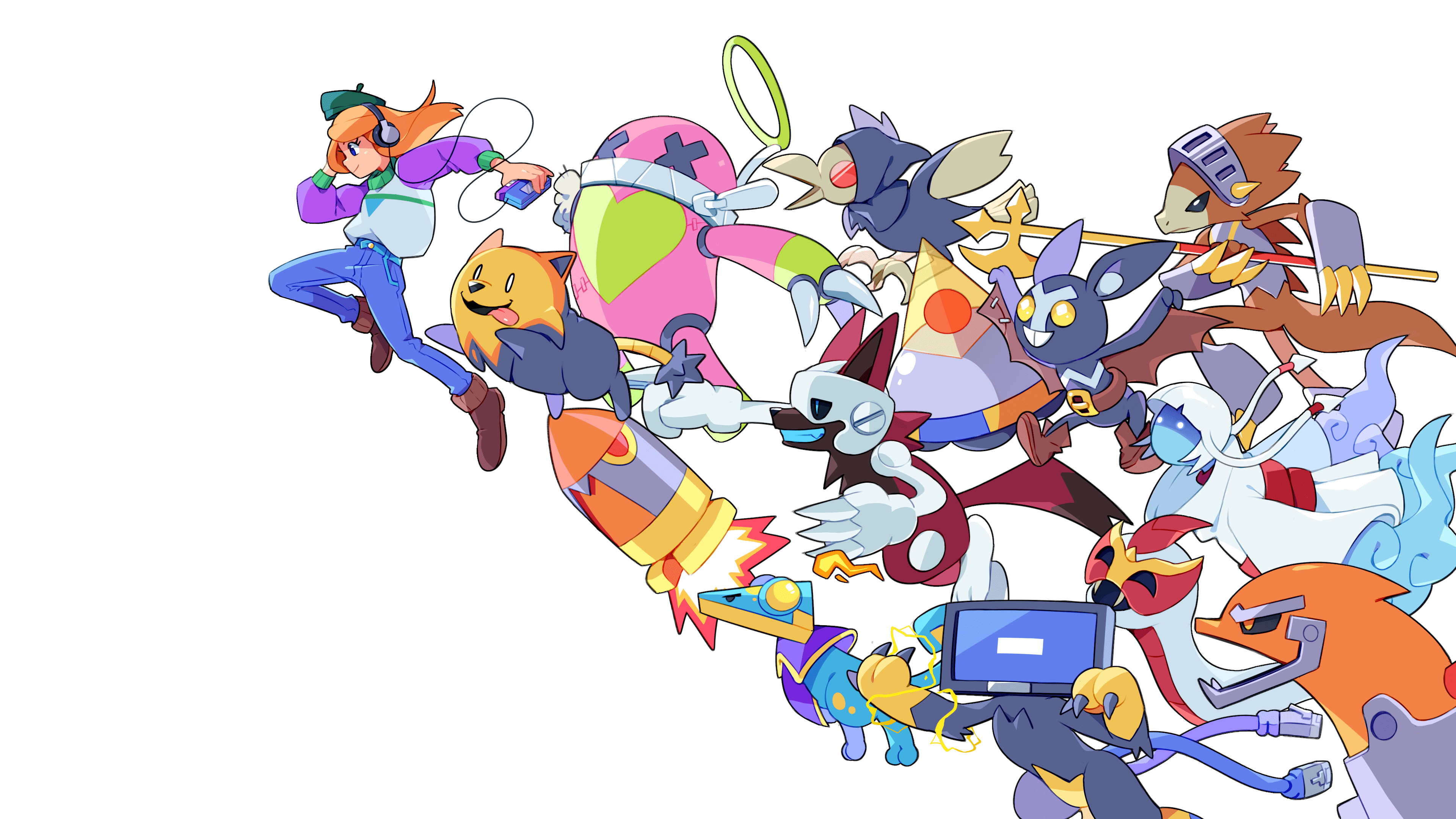
Cassette Beasts is a new breed of creature-collecting RPG. We spoke to artist, writer, and studio co-founder Jay Baylis to find out more.
Be it cards, stamps, or 1980s action figures, collecting is a pastime that humans can’t seem to escape from. That’s why, when we were first asked to “catch ’em all” some 30 or so years ago, we bought into the craze like wildfire and then never really stopped – Pokémon GO still has many of us seeking out cutesy monsters in the real world to this day. Cassette Beasts is an upcoming turn-based RPG that wears the influence of Game Freak’s classic series on its sleeve, hoping to tap into the same wholesome energy while offering some serious tweaks to the format.
Fusing creatures together is at the core of the experience here, with Bytten Studio’s spin letting you record the essence of its capturable critters and get creative with unique combinations right from the off. Of course, it all begins with you choosing a starter, and in Cassette Beasts’ case that means opting for Bansheep’s inherent sweetness or Candevil’s spooky grin.
How did you first land on the concept of ‘recording’ the spirit of creatures as opposed to outright catching them?
Both me and Tom [Coxon] worked at Chucklefish on Starbound and then Wargroove. After that, we split and made our own company. Lenna’s Inception – our first game – was basically finished, and we talked about what we wanted to work on next. We didn’t immediately jump to Cassette Beasts, but there’s always a sense of like: “Can we do a Pokémon thing?” Indie is tough, and working at a publisher previously, we knew that it’s a tough business out there. You can’t just approach things as a fan-developer first if you think about it as a business, and we were setting up a business as much as a developer. What will sell? What kind of gambles can we make money from? What will be financially viable for us long term?
We came back to the idea of a Pokémon-style, monster-collecting game and thought about the angles we would put on it that no one else will ever do. And this is the tricky part because there are a lot of monster-collecting games that go for a Pokémon homage. [They’re] really good-looking games and they know what they’re going for. But, OK, what can we do that’s our thing? We like that people like collecting monsters, and what’s collecting monsters that isn’t capturing pets? We talked about transforming into monsters and how that’s quite fun. I think Tom suggested recording things on the tapes and it kind of all fell into place from there.
I guess fusions are one of the big differentiators Cassette Beasts adds to the formula, too?
The idea of monster fusions is something I had in mind very early on – even when it wasn’t about capturing monsters. Even in the early stages, I was like, ‘we can do fusion’. I thought I could pull it off in pixel art. When you look at Pokémon games, they always push a headline feature that they can sell the game on… mega evolutions, Z moves, and so on. We approached it like, what can be our flashy ‘hey, you can look at this from the outside and immediately understand this is a fun take on it’ ? Digimon has also done a lot of stuff with fusions.
Then there’s a huge fan base around Pokémon just drawing fusions between creatures, and a fusion generator where people have done crude mock-ups. You can type in two Pokémon names, and it sticks their face onto [another’s] body and changes the colours. What if we did a better system based on that? We can actually do it and Pokémon never will because, not that they can’t technically, but Pikachu is an IP they cannot dilute – it’s too encased in a brand. But we can launch a game where our headline feature is every monster can fuse and is animated on-screen. No game has ever done that.

Healing your party involves finding a rest spot and using resources such as wood. It’s also a good opportunity to learn more about companions
Why was it important for you to evoke the style of the original Game Boy-era Pokémon games with a chibi art style?
On the personal/fan side of it, I think a lot of the Pokémon have never looked better than they did as sprites. A lot of those early designs were designed to be sprites and that’s why they look so great on the DS screen, [whereas] the jump to 3D hasn’t been as inspiring. When I was making games as a kid, it wasn’t that I was a pixel artist. I was a game artist, and this is how I knew how to make games in GameMaker. But at the same time, with just flat 2D games, a lot of people could be turned off, and there’s an element of how can we push ourselves?
We’d never worked on a 3D game ever. How do we push ourselves to the next level? Octopath Traveler was coming out around the time and people were talking about HD-2D. And people were really getting into that almost diorama look because of the 3D environments, so we were really excited about the kind of stuff we could do with that. It almost comes off as a branching universe, where Pokémon jumped into 3D. We’re like a weird timeline where they stayed pixel art and went more HD. I quite like that, and I also quite like games that mix in high-resolution illustrated UI and character portraits. I really love that combination. Like, Celeste does that. It just looks very modern to me.
It means that these games aren’t looking retro. We don’t really want the game to look retro as much as look like a modern version of stuff you might remember playing. So it’s not like this looks like a Game Boy Advance game. It’s like how a Game Boy Advance game looked in your mind when you were a kid, if that makes sense.

Battling in Cassette Beasts should look instantly familiar to genre fans, although multi-creature battles are introduced incredibly quickly
There are 120 base creatures to record. That’s already a lot, so why did you want to make things harder for yourself with the fusion mechanic?
The way the system works is that every monster is designed twice. Once as a still sprite… For clarification, it’s mostly just two of us, but for most of the animations, we have an artist called Michael Azzi. A very, very talented animator. He did most of the base monster animations in the game. He animates them as if it’s a single monster, and then I take them apart and design them in pieces and then assemble them in the engine. The fusion system then combines the two assembled ones by mixing their parts up. So every monster is animated from scratch twice: [the second way] in a modular LEGO fashion. That’s how basically the system works. It’s all procedural.
Obviously, I’m not able to animate a unique fusion for everything and design that. It’s physically impossible for anyone to do. So essentially, it’s a procedurally generated system where you make a LEGO version and then the fusion swaps those two parts and combines them.
And is it the same fusion for both creatures each time or can it vary?
Yes, although the reverse is also different. So if you use, say, Pombomb as your dominant one and then Bansheep for your second, you’ll get Pomsheep and then the reverse is Banbomb, and those are different monsters.
What inspirations did you use to base the various Cassette Beasts designs on?
So there’s a few things on this. One thing I really didn’t want was for the monsters to look like what people call ‘Fake-mons’ where these just look like you’re trying to make a new Pokémon, right? We didn’t want these to look like fake Pokémon. We wanted them to look like Cassette Beasts. That was down to me to figure out. There are a few things… one is that the actual pool of colours is limited. There are ten colours that every single monster shares in our game, which means you can see the shared colour palettes and you kind of associate them all as a set.
There are two rules: one of them is I didn’t want anything to be an elemental animal. That’s the Pokémon approach: this is a fire dog. This is a grass cat. And then I like the idea of fusing the artificial with physical things, or having [beasts] be reminiscent of pop cultural things or folklore elements. A bit weirder and a bit more action figure-y. Again, going along with those dominant, bright colours, a bit more, like, eighties.
And then another thing is because you’re transforming into them, one of my rules is that you can’t transform into something that looks like it would be worse in a fight than being a person. You wouldn’t want to turn into a worse thing. There were some early monsters I designed where they looked too weak.

Getting around obstacles like ledges and cliff edges is made easier by transferable creature skills that can be used while exploring, such as a glide.
Do evolutions exist in the game?
Yes, all monsters evolve. It’s similar to Pokémon, where some have two stages and others have three. One thing I think Digimon does really well is branching evolutions. I love that! So some monsters will have two different evolutions they can branch into – they all fuse. I’ve seen some people watching our trailer and being like, ‘They probably can’t have evolutions’, or ‘they can’t have many monsters in the game if they’re also doing fusions’. Well, we wanted to make the game where you play it and there are no concessions. We wanted just to go as hard as possible.
We’ve got 120 monsters. We couldn’t quite go for 150 or beyond that because we’re already pushing ourselves as much as possible. We thought that was a good middle ground. I mean, the fusion system number puts things up to 14,000. Obviously, a lot of those will look similar and have similar traits, but in terms of unique monsters you can fight, there’s an absurd amount.
How do you determine the evolutions you want a creature to branch into?
Sometimes they’re hidden. There are little [clues] in the game where we hint at how you can get a secret branching evolution for a monster. Maybe, if you play long enough, you’ll see a prompt that encourages your branch.

When you and your companion’s monsters fuse, it will see the movesets of both combine and get stronger.
You’ve teased that fusions can be strengthened by forming strong bonds with companions. How will this work? Does it share similarities with, say, a dating sim?
It’s very Persona-y. I really like writing characters. I have this broader theory that game developers, especially at a western, triple-A level, underappreciate the importance of character and bonding with those characters. Look at how much people remember Mass Effect versus other sci-fi action games at the time. I think character stays more than anything.
I think there’s a huge missed opportunity, and so many games don’t tap into that kind of aspect to character. I wanted to write cool characters while going for a bit more of a mature vibe. The Pokémon anime’s about Brock and Misty travelling with you across the land; in the game you’re on your own. We wanted to tap into the party aspect in the anime. We have bits of these characters walking through environments and they’ll comment on environment changes. They’ll comment on something that’s happening in the story and bond with you.
Because we have this thing where you turn into monsters and we have fusion, there are instances where you and a person fuse together. Which is a very weird concept. I think people like weird. I’m actually banking on people appreciating how weird it is. It’s very Steven Universe. [That TV show] introduced this aspect of fusing and creating new characters out of other characters, and about how that’s a personal thing. The stronger your bond with them, the stronger the fusion. We’re excited to see how it plays out.

Godot was the game engine of choice for Bytten Studio due to its flexibility.
How many companions are there?
Six, and they’ll have their own storyline and different personalities. You can see how they react to different things in the world. I think one of our angles is: come for the monster fusions, and maybe you’ll stay for the characters because that’s the stuff you’re going to remember.
Are the creatures categorised into different elemental types like Pokémon, or does Cassette Beasts use another method to have each play distinctly?
They have different elemental types. We don’t have the Pokémon system of ‘fire does twice as much damage to grass’. Instead, we have what we call the chemistry system, where you can provoke status effects by doing certain elemental attacks on certain elemental monsters. Our go-to example is if you do fire on poison, it ignites and burns. So it’s kind of ‘super-effective’, but not in a numerical or ‘multiply on damage’ way. You can do fire on water – it creates healing steam, which gives a healing status effect. There are weird little combinations like that, where you can chain elemental status effects on monsters.

Bansheep’s candy floss coat makes her your “sweet” choice of starter creature.
How much of that will players discover naturally as they play?
We have little pop-ups that explain it. That’s been one of the more challenging aspects: to go for something quite different and sell the player on how it works, introducing elements as they go.
Creature battlers of this ilk don’t always have voice acting, so why was it important for you to include it in Cassette Beasts?
I’d worked previously with Wargroove. I handled a lot of voice acting early in that, and I like voice actors. I think it’s humbling to write some silly dialogue, and have someone professional perform it. It brings life to characters, and I think also an appeal to the business standpoint. It makes a game feel a bit more high-budget, especially when you’re trying to convince people this is a premium product. Also, the characters are meant to be quite real. They’re not fantasy characters; they have regional accents and stuff like that. Having voice actors sells that these are meant to be real people. Because you have to bond with these characters and maybe romance them, having a sense of what they sound like tells you a lot.
What reasons do players have to explore, aside from narrative progression?
We’re playing into the classic anime trope, ‘you landed on a mysterious island’, but we’re deconstructing that a little bit. What does it look like when people end up in a world full of monsters that are like ordinary people? How does it affect you? And how does that affect other characters? The prologue sets up what the rest of the game is and your quest. Essentially, you’re looking to find a way back home. Other characters have their own reasons for wanting to go back to their own worlds. We’re big fans of Zelda. Lenna’s Inception, our previous game, is a Link’s Awakening homage. That’s Tom’s favourite game ever, so we tapped into that more. We’ve got this island. How do you explore? What interesting stuff can you do? How does the society work? What’s its history? It gives us a sandbox to play around with.
Are you prepared for an avalanche of fan art should Cassette Beasts really chime with people?
I’m all for fan art. I like to see this stuff. This all started from me making Pokémon fan art when I was a kid. It’s the most humbling thing you can have as an artist. I hope people like our game enough to do fan art. It can be horny if they want. That means they’re really enthusiastic in a way that I didn’t intend. I’m here for that.
CassetteBeasts is scheduled to launch on PC and consoles in 2023.


